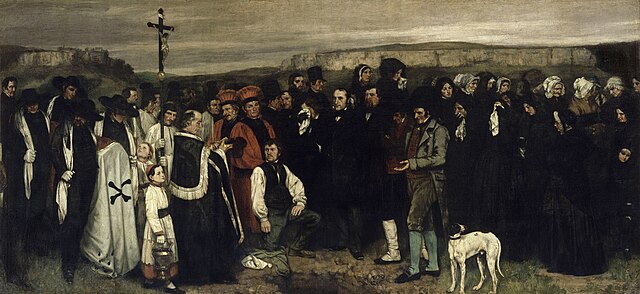Social realism is the term used for work produced by painters, printmakers, photographers, writers and filmmakers that aims to draw attention to the real socio-political conditions of the working class as a means to critique the power structures behind these conditions. While the movement's characteristics vary from nation to nation, it almost always uses a form of descriptive or critical realism.
Grant Wood's magnum opus American Gothic, 1930, has become a widely known (and often parodied) icon of social realism.
Charles de Groux, The Blessing, 1860
Jacob Riis, Bandit's Roost, 1888, from How the Other Half Lives. Bandit's Roost at 59½ Mulberry Street was considered the most crime-ridden part of New York City.
Gustave Courbet, A Burial At Ornans
An art movement is a tendency or style in art with a specific art philosophy or goal, followed by a group of artists during a specific period of time, or, at least, with the heyday of the movement defined within a number of years. Art movements were especially important in modern art, when each consecutive movement was considered a new avant-garde movement. Western art had been, from the Renaissance up to the middle of the 19th century, underpinned by the logic of perspective and an attempt to reproduce an illusion of visible reality. By the end of the 19th century many artists felt a need to create a new style which would encompass the fundamental changes taking place in technology, science and philosophy.
Jacques-Louis David, The Coronation of Napoleon, (1806), Musée du Louvre, Neoclassicism
Eugène Delacroix, Liberty Leading the People 1830, Romanticism
Thomas Cole, The Course of Empire: The Savage State, 1836, Hudson River School
Gustave Courbet, Stone-Breakers, 1849, Realist School








